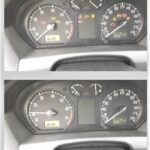Erasing trouble codes with an OBD2 scanner before an emissions test might seem like a quick fix, but does it actually work? This article will explore the implications of clearing diagnostic trouble codes (DTCs) prior to your vehicle’s emissions inspection. We’ll cover why it’s generally not recommended and what you should do instead.
Why Erasing OBD2 Codes Before an Emissions Test is a Bad Idea
Many drivers believe that erasing codes with an OBD2 scanner will magically solve their emissions problems. Unfortunately, this is a misconception. While clearing codes might temporarily turn off the check engine light, it doesn’t address the underlying issue causing the code in the first place. In fact, it can even hinder the emissions testing process.
How Emissions Tests Work with OBD2
Modern emissions tests rely heavily on the OBD2 system’s diagnostic capabilities. The system continuously monitors various components related to emissions, looking for malfunctions. When a problem is detected, a DTC is stored in the vehicle’s computer. The emissions test equipment then reads these codes to determine if the vehicle’s emissions system is functioning correctly.
The “Readiness Monitors”
Crucially, the OBD2 system uses “readiness monitors” to track whether specific emissions-related tests have been completed. Erasing codes resets these monitors, essentially telling the system that no tests have been run. As a result, the emissions test will likely be incomplete or result in an automatic “reject” or “not ready” status. This is because the testing equipment needs data from the completed monitors to accurately assess the vehicle’s emissions performance.
Driving Cycles and Relearning
After clearing codes, the vehicle needs to go through a specific “drive cycle” – a series of driving conditions – to allow the OBD2 system to rerun its diagnostic tests and reset the readiness monitors. This process can take anywhere from a few days to a week of normal driving, depending on the vehicle and the specific monitors that need to be reset.
Masking Potential Problems
Another significant drawback of erasing codes is that it can mask underlying problems that could lead to more serious and costly repairs down the line. By clearing the codes, you’re essentially hiding symptoms without addressing the root cause. This can make diagnosing the actual problem more difficult for a mechanic. For example, a flashing check engine light might signal a serious problem that could damage your catalytic converter, a costly component to replace. Ignoring this warning and simply clearing the code could exacerbate the issue.
What to Do Instead of Erasing Codes
If your check engine light is on, the best course of action is to get a proper diagnosis from a qualified mechanic. They can use an OBD2 scanner to retrieve the codes and determine the underlying issue. Repairing the problem, not erasing the code, is the only way to ensure your vehicle passes the emissions test and runs efficiently. Remember, a loose or damaged gas cap can also trigger the check engine light. Check this first before heading to a mechanic.
Conclusion
While the temptation to erase OBD2 codes before an emissions test is understandable, it’s ultimately counterproductive. Instead of trying to circumvent the system, address the underlying problem causing the codes. This will not only help you pass the emissions test but also ensure your vehicle is running safely and efficiently. Consult a qualified mechanic for diagnosis and repair to avoid potential long-term problems and costly repairs.

